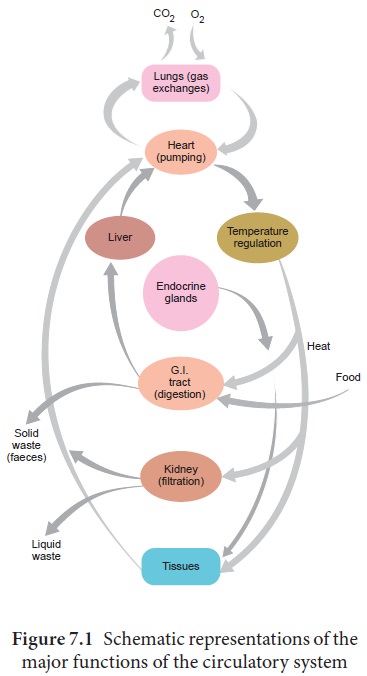Zoology - Body Fluids and Circulation | 11th Zoology : Chapter 7 : Body Fluids and Circulation
Chapter: 11th Zoology : Chapter 7 : Body Fluids and Circulation
Body Fluids and Circulation
Body Fluids and
Circulation
Animals particularly larger animals like mammals, are more
active. They depend on locomotion to find food which is an energy consuming
process. Nervous system is required to coordinate activities by sending nerve
impulses that involves energy. All living cells have to be supplied with
nutrients, oxygen and other substances and have to remove CO2 and
waste products from them. It is therefore essential to have efficient
mechanisms for transport of these substances to and from the cells. Different
groups of animals have evolved different methods of transport. Very small
organisms like the sponges and coelenterates lack a circulatory system. Water
from their surroundings enters their body cavity to facilitate the cells to
exchange substances by diffusion. More complex organisms use special fluids and
well organized transport systems within their body to transport such materials
by bulk flow or connective transport
with pumps. The phenomenon of bulk flow is fundamental to many physiological
processes like respiration, digestion and excretion. The bulk flow of fluids
can transport substances to long distances faster than by diffusion. The human
circulatory system can circulate a millilitre of blood from the heart to feet
and back again within 60 sec, rather than 60 years which may be needed if it
were by diffusion.
Within our body the transport system helps in the coordination
of physiological processes by transporting chemical signals from one place to
another and assisting in the defence of the body by transporting immune cells
to the sites of infection. These processes contribute to overall homeostasis
(maintenance of constant internal environment). Movement of respiratory gases,
hormones, nutrients, wastes and heat are carried by the circulatory system as
shown in Figure 7.1.

Oxygen and carbon dioxide are exchanged in the lungs and tissues
whereas nutrients from the digestive system are carried to the liver and the
wastes from the tissues are carried by the blood and finally removed by the
kidneys. The hormones are transported to their target organs. Circulatory
system helps to maintain the homeostasis of the body fluids and body
temperature (heat exchange).
The homeostatic regulation of the cardio vascular system
maintains blood flow, or perfusion, to the heart and brain. In vasovagal
syncope (fainting), signals from the nervous system cause a sudden decrease in
blood pressure, and the individual faints from lack of oxygen to the brain.
Related Topics